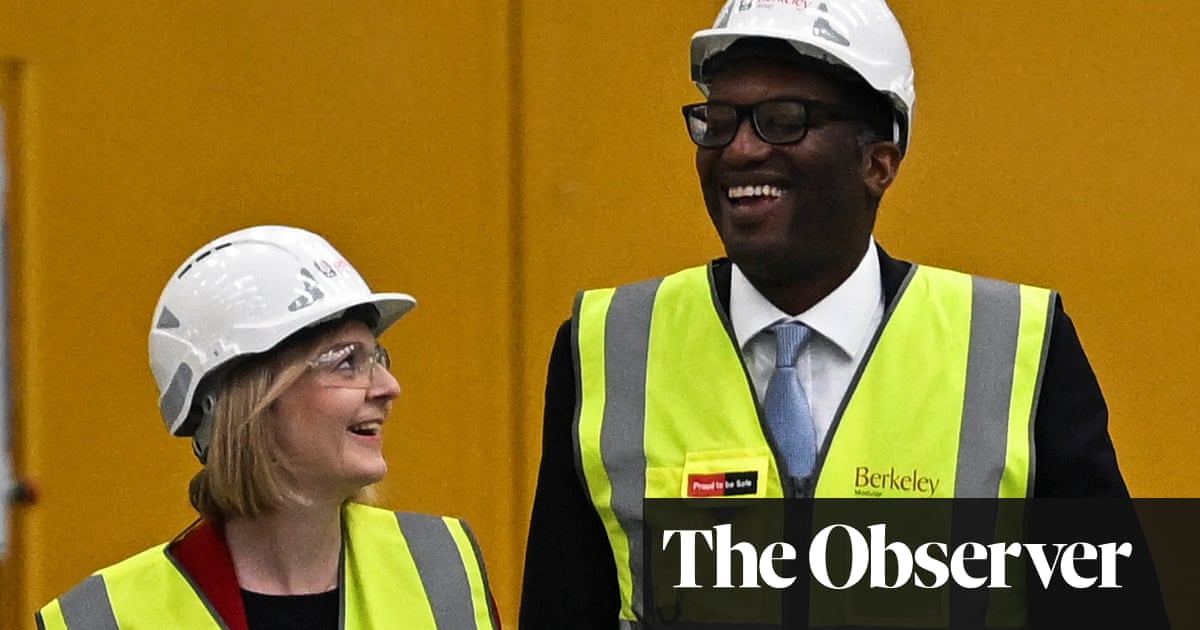
Today the new chancellor, Jeremy Hunt, will present a set of spending cuts that are widely expected to be a return to the grim days of George Osborne’s reign. “Eye-watering” spending cuts and tax rises have been heavily trailed in the media. The chancellor, his government and their media outriders have justified this renewed attack on public services and economic prosperity by pointing at a huge and terrifying new celestial body: the “fiscal black hole” – which is alleged to have emerged in the public finances in the last month, and perhaps be as big as £60bn. The government has been left with no choice, in the words of the Institute for Fiscal Studies’ director, Paul Johnson, to inflict “big, painful spending cuts” or tax rises.
Yet this screeching U-turn in government policy – contradicting promises to end austerity and its commitments in the 2019 manifesto – is being driven by nothing more than an insubstantial statistical artefact. The “fiscal black hole” is not a hard economic fact. It’s the result of uncertain forecasts and the government’s own target for the level of debt in five years’ time. This isn’t the same as looking at (for instance) real wages – currently falling rapidly – or rising unemployment today. It would be a profound error to use this ghostly “fiscal hole” as an excuse to drag the country back into the economic doom-loop of austerity.
Research by the academic economists Jo Michell and Rob Calvert Jump, published this week by the Progressive Economy Forum (PEF), of which I am director, exposed just how insubstantial the “black hole” really is. The “hole” emerges by looking at the gap between what the forecasts of government spending and tax revenues are likely to say and what the government says its target for the size of its debt is, relative to GDP. Estimates of the size of the gap between expected forecasts and the government’s target have settled at about £50bn in the last few weeks.
It’s true that the economic outlook appears even worse than it did a year ago, especially for the UK, where a decade of austerity has left the economy weaker than other, similar countries – even before we consider Brexit. But chasing and trying to fill a “fiscal black hole” with spending cuts will only reinforce those underlying weaknesses, squashing demand and undermining investment.
Despite the confidence with which the “fiscal hole” has been presented, it rests on highly uncertain forecasts about the future. The American economist JK Galbraith once remarked: “Economic forecasting is there to make astrology look good.” It’s not an exact science. Projections for government tax revenues and spending into the future are always subject to substantial uncertainty, since there are some parts of both that the government can’t directly control. Economic growth, which determines tax revenues, is uncertain, especially now with the aftershocks of Covid still rolling onwards, environmental turmoil and rising geopolitical tension. The interest the government pays for its borrowing is equally uncertain, for similar reasons, and this affects the path of future government spending. PEF’s research shows that the two uncertainties together have far more impact on whether the government hits its own target than changes to taxes or spending.
But that target wasn’t given by God, or even Johnson of the IFS. It’s one the government itself has selected and could easily change – indeed, in the last few weeks it seems to have been quietly shifted from three years to five years, while the last decade has seen six different fiscal rules adopted, and then broken. The PEF research shows that a simple accounting change, moving the government’s measure of its debt used to make the target back to the one it was using until January this year, obliterates the “black hole” entirely – and instead allows it a further £14bn to spend. This shows directly how arbitrary these targets can be.
It’s the hard economic facts that should concern us. Whatever damage the Kwasi Kwarteng September mini-budget did has been very substantially repaired, with the majority of its tax changes reversed by Hunt upon arriving in office. Government borrowing costs have come down to pre-Kwarteng levels, and the pound has recovered sharply. It does still cost the government somewhat more to borrow than back in March, but this is a common problem across the developed world: conditions for borrowing by governments are getting tighter everywhere.
Inflation, although forecast to come down somewhat as energy prices fall, is likely to remain higher than we have been used to. Wage rises will continue to lag, squeezing households hard. As households pull back on their spending, the economy is likely to tip into a recession. If government joins this spending squeeze, cutting its own spending, it will not cure inflation. The more likely outcome is “stagflation” – the deadly, 70s-style combination of high inflation and recession.
Uncertain forecasts and an arbitrary target are not enough to declare a “black hole” in the public finances. They’re certainly not enough to make huge decisions about taxes and spending of the kind that will affect millions of people’s lives. We’ve seen a near-£100bn lurch in government policy: from £45bn loosening in the mini-budget to a likely £50bn tightening in the autumn statement. This is not a serious or credible way to conduct policy. Caution should be the order of the day from the government – prioritising real economic problems, such as low investment, low productivity and low wages, over chasing statistical fictions such as the “black hole” back into austerity.
James Meadway is director of the Progressive Economy Forum












